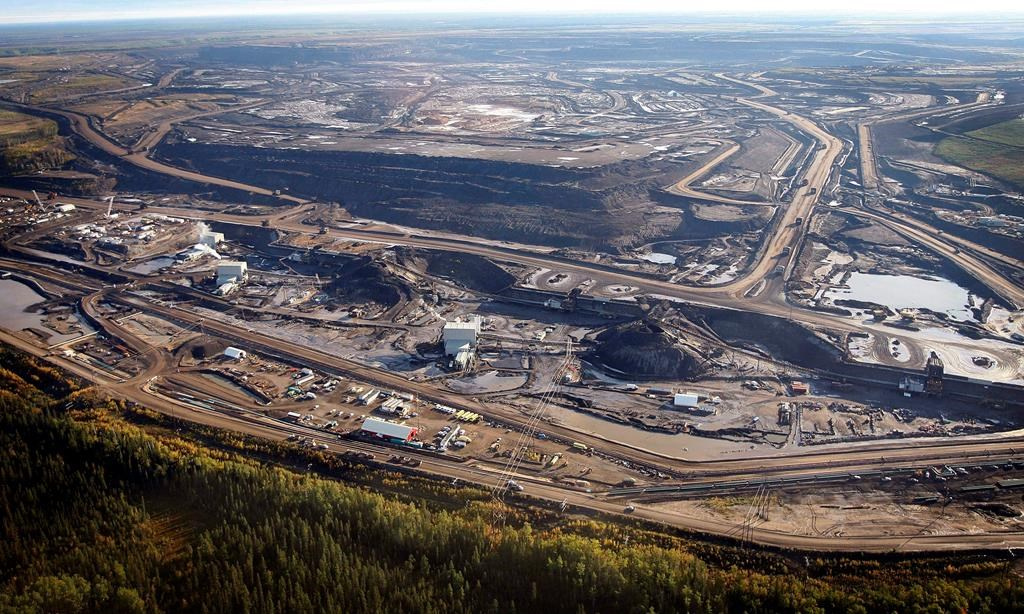Support strong Canadian climate journalism for 2025
A new wave of cold water is about to hit Canada's much-buffeted oilsands industry but whether it will be a perfect storm or a tempest in a teapot is yet to be seen.
Tighter pollution rules by the International Maritime Organization are set to take effect Jan. 1. The new guidelines, dubbed IMO 2020, will limit the sulphur content of "bunker" fuel on ships to just 0.5 per cent, down from the current 3.5 per cent.
The deadline has been in place for years, but the change is still expected to wallop prices for heavy oil containing high levels of sulphur, such as raw bitumen from the Alberta oilsands. Bitumen makes up about half of Canada's 4.6 million barrels per day of crude oil production.
The discount on Western Canadian Select bitumen blend crude prices versus North American benchmark West Texas Intermediate could almost double in January, said Alan Gelder, vice-president, refining, for consultancy Wood Mackenzie.
"In October, we've got the WTI-WCS differential at about US$16 per barrel. And we've got that widening out to the high-$20s in January," he said in a recent interview from London.
He added the differential should moderate to about US$23 or $24 by the middle of 2020.
The price difference between WTI and WCS is a closely watched figure because it dictates oilsands profitability and royalties paid to the provincial government. When the differential widened to as much as US$52 a barrel at the end of 2018, a development blamed on pipeline capacity failing to keep up with oilsands growth, the Alberta government introduced production curtailments in a successful bid to narrow the spread. The production limits have since been reduced but not cancelled.
Analyst Phil Skolnick of Eight Capital says there was little evidence of a major jump in WCS differentials pricing for January crude oil trades that started in early December.
The impact of the new pollution rules is being softened by disruptions in the flow of competing heavy oil from Venezuela and Mexico into the U.S., as well as new petrochemical projects in Asia that need heavy oil as feedstock, he said.
"Canada is benefiting because of Venezuela, Mexico. With that, combined with the pull from these new petrochemical plants that are consuming medium and heavy oil, it's helping to offset the risks of IMO 2020," said Skolnick.
Companies that own refineries or oilsands upgraders are expected to benefit as the new standards will increase demand for refined low-sulphur fuels.
At its recent investor day, chief financial officer Dan Lyons of Calgary-based Imperial Oil Ltd. said it will offer four options for marine fuel customers at its Vancouver terminal — 3.5 per cent sulphur, 0.5 per cent, 0.1 per cent and blends made to order.
An expansion at its Lloydminster Upgrader on the Alberta-Saskatchewan border will help Calgary-based Husky Energy Inc. benefit from IMO 2020 as its diesel output will jump to 10,000 bpd from 6,000 bpd, said spokeswoman Kim Guttormson.
The company also produces diesel at its Lima Refinery in Ohio, which has been reconfigured to use more heavy oil.
Saint John-based Irving Oil Ltd. produces VLSFO (very low sulphur fuel oil) and marine gas oil at its Whitegate refinery in Ireland and is offering IMO-compliant fuels in New Brunswick through its expanded bunker operations, said spokeswoman Candice MacLean in an email. It also offers marine fuel oil in St. John's, N.L., and Halifax, she added.
Most of the five million barrels per day of bunker fuel currently burned on ships is derived from the crude residue that remains after more valuable fuels such as gasoline and diesel have been removed in a refinery.
Following combustion, the sulphur in the fuel becomes sulphur oxide, a pollutant that causes respiratory problems and lung disease as well as acid rain. IMO 2020 is expected to prevent 8.5 million tonnes per year of sulphur oxide from entering the atmosphere.
The IMO first began restricting emissions in 2005 and its limits on sulphur in bunker fuel have been progressively tightened. Four "emission control areas" in Europe and North America already have a 0.1 per cent limit.
About 3.5 million bpd of bunker fuels consumed in 2019 are considered high-sulphur fuel oil. That is expected to fall to about 1.3 million bpd in January, according to Wood Mackenzie, as most ships will switch to alternatives including VLSFO and marine gas oil.
About 15 per cent of ships will have added "scrubbers" by then to capture sulphur from their smokestacks and allow them to continue to burn high-sulphur crude.
Full compliance is not expected on Jan. 1. Some ships will be allowed to continue to burn high-sulphur fuel by citing safety concerns about switching to new fuel blends or because their scrubbers haven't arrived yet.
Refiners are expected to be able to deliver about 1.4 million bpd of VLSFO in 2020, while demand for marine gas oil, a refined product similar to diesel, is expected to jump to about one million bpd in 2020 and gradually grow to about 2.4 million bpd.
The new fuel standard could eventually boost demand for liquefied natural gas, with Wood Mackenzie forecasting 22 million tonnes per year of LNG demand from shipping by 2030.
The high cost of switching to LNG means it will likely only be installed on new ships, said Gelder.
Not everyone is satisfied with the higher standards under IMO 2020.
Environmental groups including Stand.earth have called on the cruise and shipping industries to ban the use of scrubbers as they allow the continued burning of high-sulphur fuels.
They also call LNG a "false solution" that won't help the industry reduce its greenhouse gas emissions.
This report by The Canadian Press was first published Dec. 28, 2019.
Companies in this article: (TSX:IMO, TSX:HSE)





Comments